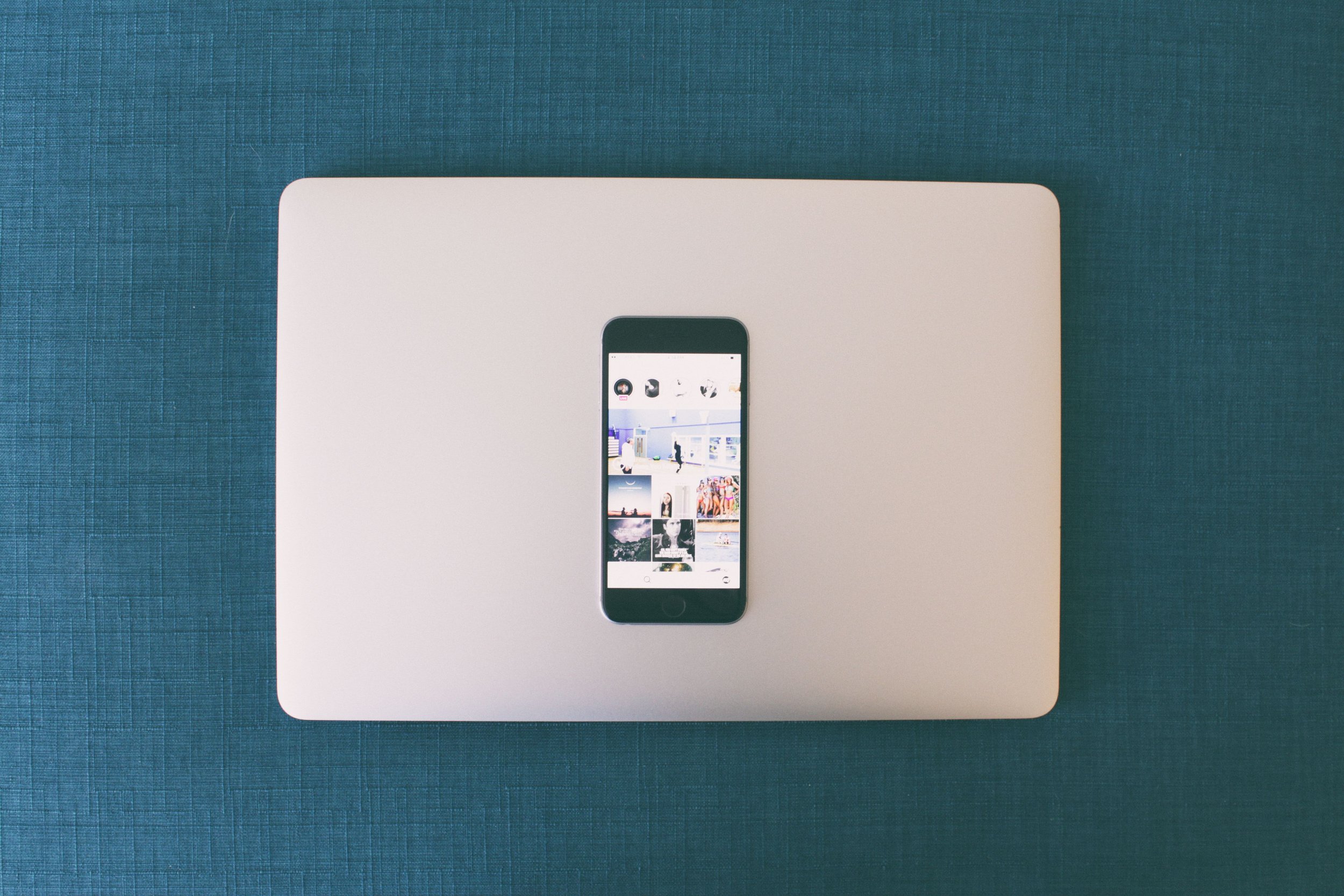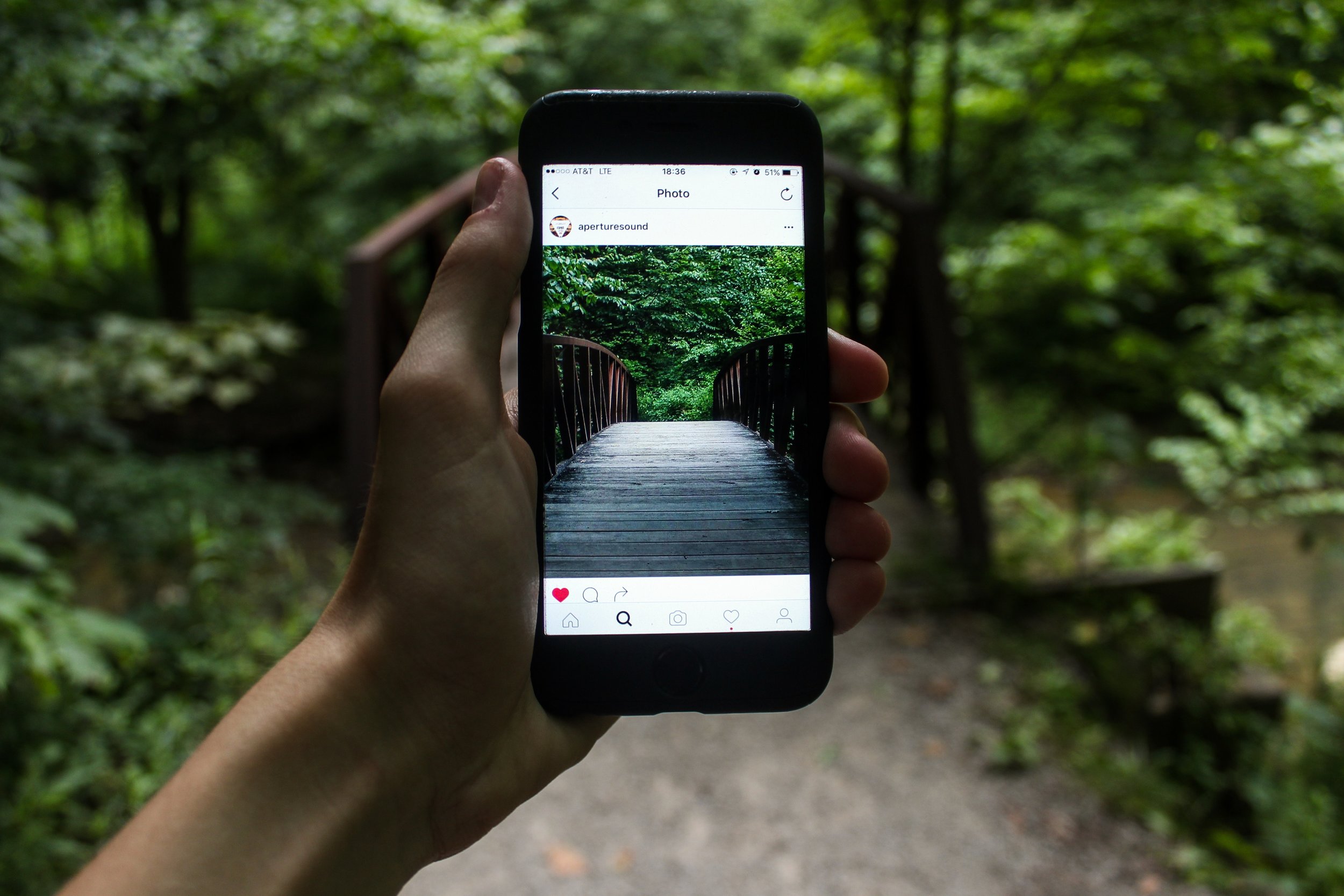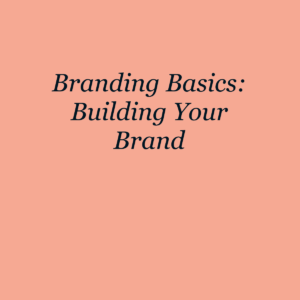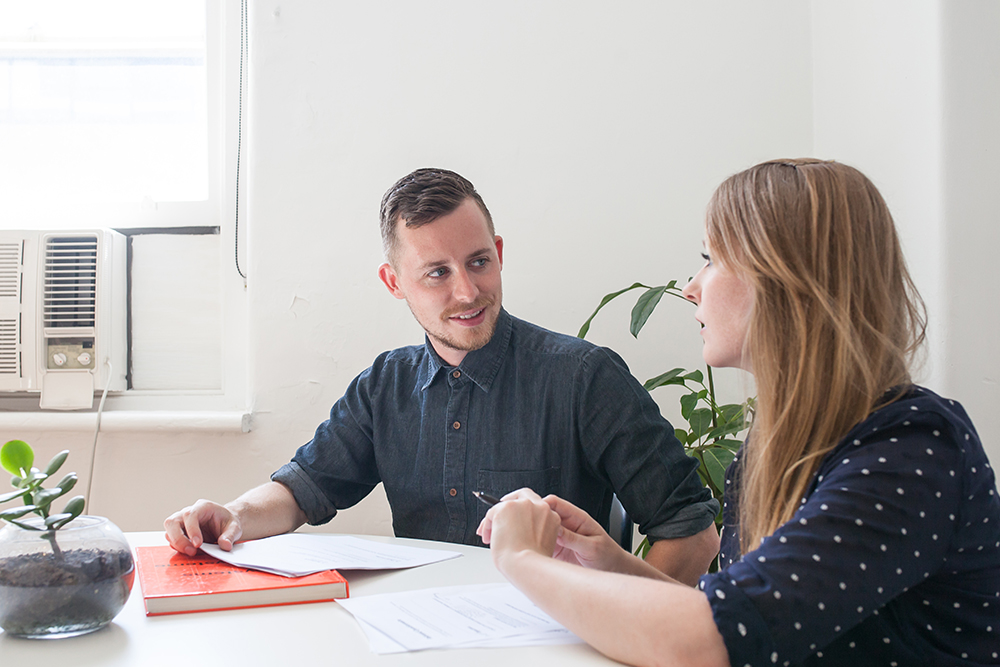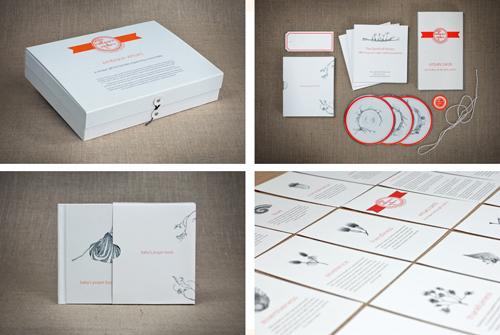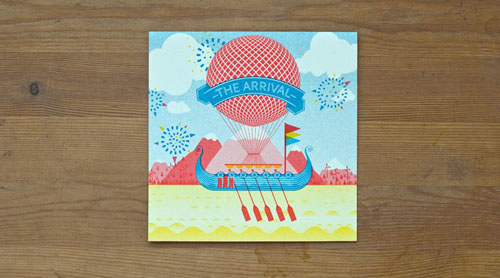Say hi to Christie Brewster
Over the past 16 years, Christie Brewster has been very busy. She has worked in Sydney, London and New York, providing creative solutions for brands such as Qantas, BBC, Australian Chamber Orchestra, Carnegie Hall, Pinchgut Opera, Open Data Institute, Hitachi Vantara, and TEDx London. We chat with Christie about her career, and how she gets to do what she does.
Over the past 16 years, Christie Brewster has been very busy. She has worked in Sydney, London and New York, providing creative solutions for brands such as Qantas, BBC, Australian Chamber Orchestra, Carnegie Hall, Pinchgut Opera, Open Data Institute, Hitachi Vantara, and TEDx London. We chat with Christie about her career, and how she gets to do what she does.
Tell us a bit about yourself…
I’m currently Senior Graphic Designer for Medium Rare Content Agency working with brands such as Qantas magazine, Coles magazine, Bunning, Officeworks and David Jones. I’m responsible for digital graphic design presence, and also work closely with our Art Director on storyboarding, illustration and mock-ups, to on-location shoots and social media executions – I love seeing a creative project come to life from concept to completion.
Having studied Photography a few years ago, and choosing to work with a ‘somewhat’ controversial mirrorless camera – I’ve enjoyed approaching photography with consideration between image and typography and partnering the two to generate a meaningful and engaging piece of content.
What is your current business/creative pursuit/job?
I’m specifically inspired by travel, hospitality, the arts and fashion with my short-term goal to be Art Director for a magazine brand. My bigger picture of goal is to own my own creative agency one day.
How would you describe your career so far and how did you get into this industry?
My role has varied over my career, starting out as a junior designer operating digital print presses, to working as an in-house designer for marketing departments in art organisations such as The Sydney Symphony, BBC Proms, and Australian Chamber Orchestra. These roles contributed to several career highlights, including attending the Last Night of the Proms after-party at the Royal Albert Hall in London, and meeting Ita Buttrose to work on the Sydney Symphony concert brochures, to photographing Lang Lang at the Sydney Opera House and traveling as the resident photographer for the Australian Chamber Orchestra’s tour to Tokyo, Japan. I’ve been incredibly fortunate that graphic design has opened my world to travel and experiences that I could never have imagined when I graduated from Western Sydney TAFE 16 years ago.
Last year, I chose to broaden my experience and skills in an agency environment, where I see long-term progression to Art/ Creative Direction. Medium Rare Content Agency delivers high quality, best-in-class creative digital, social, and print native content across a diverse range of clients which I have been fortunate to work with on many levels. I enjoy collaborating and coordinating with internal and external members.
What does a typical work day look like for you?
At the moment our office is working remotely and the team starts every day with a work-in-progress Zoom call at 9am sharp where current and ongoing work is reviewed and divided amongst the team. Each workday is varied for me – from working on advertorials for brands such as Armani, Destination NSW, or Rockpool Restaurant who advertise in Qantas magazine, to designing HTML 5 webtiles for Amex or Red Energy or storyboarding Officeworks’ latest ‘Geeks to You’ video – each day is diverse and deadline-driven which keeps me engaged and on my toes!
What is the most important aspect of your job/ creative pursuit?
Creating honest output and contributing quality work that is an asset to my team.
Researching insights and trends that are occurring in Australia and abroad and applying findings to relevant campaign pitches.
Sharing knowledge, being helpful and kind to others.
What have been some of the biggest challenges in your career?
Professionally, making the switch from being an in-house designer to agency designer, when so many others were transitioning the other way. In hindsight, I probably had a lot of anxiety around it because I’d heard many horror stories about agency work. I’m fortunate that my current place of work value work-life balance and are a great team of creatives who genuinely care about creating quality work.
Personally, I’ve really benefitted from having some guidance in defining my career direction, specifically related to how I make the next step to Art Direction. In addition to engaging a career coach, I recently completed the CWC Member Mentoring Program, a great initiative that provided me with support to connect and develop my skills. I’ve found both experiences incredibly valuable - providing me with a framework for my career, a timeline for my goals and a new way of thinking about the way I can adapt, evolve and transform in my journey.
What are some of the things which inspires you?
Beautifully designed publications that have gorgeous paper, finishing, typefaces or clean font styling, some titles I love are:
Qantas magazine
Numéro magazine
Vogue magazine
Gritty Pritty digital magazine
Best creative memory?
Managing the editorial design for the BBC Proms Guide in London and designing the first Proms Guide Ebook – an exciting digital development that gained promotion from Apple and met sales target within two weeks.
What would you tell your younger self?
Listen to your instinct – if it doesn’t feel right, it probably isn’t.
Make that move overseas you’ve been thinking about – you won’t regret it!
What advice would you give to someone who wanted to break into the industry you are in?
Bring something someone else can’t. I’ve wanted to work in magazines for most of my career, the reason I was got to where I am today was that I could bring a different way of thinking.
When working on creative projects aim to bring a holistic approach to your design method – look at the end result first and assess how the content will be utilised, whether that be in print or online, then work backward and divide the creative process into manageable tasks to deliver your vision.
How to stay "Instasafe" as a creative
I love Instagram. It lets me communicate to the world what I'm about (nourishing food, natural light and comfortable shoes wherever possible, and preventative health in life, law and business!), and has allowed me to connect with so many like-minded clients...
Photo via Pexels
I love Instagram. It lets me communicate to the world what I'm about (nourishing food, natural light and comfortable shoes wherever possible, and preventative health in life, law and business!), and has allowed me to connect with so many like-minded clients through my page @thelawyerslunchbox.
And I know many of my clients loving using it for their own businesses.
But we all need to make sure we stay legally safe on Instagram. This means not falling foul of Insta's terms and conditions, using the right images and not saying or doing anything illegal.
Here are some tips...
Types of images
Instagram has the right to remove, edit, block, and monitor accounts containing content that Instagram determines violates their terms of use.
To avoid problems, you must not post violent, nude, discriminatory, unlawful, infringing, hateful, pornographic or sexually suggestive photos. This term is interpreted sensibly, for example if your business is in fashion, intimate apparel, swimwear, music, celebrity, modelling etc, photos may be quite sexual without causing any trouble. But nudity, or pornographic inference (even if digitally-created), will not be okay. Use common sense when thinking about what Instagram and its diverse audience may find offensive. Nudity in photos of drawings, paintings and sculptures will be acceptable, as will photos of mastectomy scarring and breastfeeding women.
If your business is related to children or you like to share photos of your own family, be mindful of the broad audience that they may be open to. Photos of nude or partially nude children may be removed, even if they seem innocent and are being shared with the best intention. Instagram’s aim here is to ensure that they don’t fall into the wrong hands.
Copyright
You can only use images that do not infringe others’ intellectual property rights. If you are posting authentic images created by you or your business (such as your own photos, photoshoots, illustrations, videos, or graphics) then this is not an issue. But if you want to post an image found online, then you must be vigilant. There are millions of high-quality graphics and photos online available for free commercial use. Many websites curate images in the public domain, and you are free to use them in any way. In most cases, you do not have to provide attribution. But check the terms of the site to make sure. If attribution is
required, check what format.
It is best to assume every image you find online is copyrighted – a copyright notice is not legally required as notification of copyright, so the absence of a © or watermark isn’t a sign that no copyright exists. If an image is covered by copyright, the copyright holder may agree to some uses but not others. You must check this before using the image.
If you alter a copyrighted image, it does not relieve you from potential liability. If you repeatedly infringe other people’s intellectual property rights, Instagram will disable your account.
On Instagram, you are liable for what you upload. This means you are legally responsible for copyright violations even if you hire a social media professional who chose and used the offending image. It is important to ask your social media manager where they source their images from. You should contractually ensure that if an image they use is found to violate copyright and you are required to pay, that they will indemnify you.
Music is covered in the same way as images, and you are not allowed to use music that you don’t own the rights to, for any commercial or non-personal use. This includes music in videos uploaded to your feed as well as Instagram lives and IGTV, and can extend to music playing in the background of videos.
Photo via Pexels
What you can legally say
Don't copy any other person's written work in your Instagram posts. This may infringe their copyright.
And don't post unwanted comments, likes or other forms of commercial or harassing communication (spam) to Instagram users. This includes repeatedly contacting people for commercial purposes without their consent.
Further, online cyber bullying is a crime in Australia. You must not threaten, harass, or offend someone, stalk someone, access others’ Instagram accounts without permission or defame someone on Instagram.
How to deal with trolls
A troll is a member of an online community who deliberately tries to disrupt that community by posting inflammatory content.
How should you deal with trolls commenting on your business page?
Use Instagram’s built-in reporting option. Instagram will quickly remove content that does not meet community guidelines.
Unfollow or block the person who posted the comment. And delete the trolls’ comment on your post.
Sometimes ignoring a troll is best. If they are looking for a reaction, they may lose interest when you give them nothing.
If the troll is a customer with a complaint, take notice and try to help. Humour can be used to effectively engage unhappy customers and turn them into advocates for your business. Acknowledge yet make light of the situation, and apologise for the customer’s experience.
If the troll is spreading rumours or misinformation, address the issue head-on and retaliate with the truth.
If the troll points out a mistake, look into it, make the proper corrections and admit that you were wrong.
Instagram has the right to modify or terminate your account for any reason, without notice,
and at any time. So stay the right side of their terms and the law.
Jessica Kerr is the director of Sinclair + May. Jessica set up Sinclair + May with a view to do law differently and make legal services accessible for small businesses. Sinclair + May operate on a fixed fee basis and offer retainer services for their clients. Sinclair + May is a female-led, boutique commercial law firm and work extensively with the creative industry. You can follow Jessica on instagram @thelawyerslunchbox for useful legal tips and see more about Sinclair + May at www.sinclairmay.com.au.
Interview: Jane Connory, a champion for women in graphic design
Inside Jane Connory's home, the walls are covered in art, including Guerrilla Girls' manifestos—an indication of her determination to increase visibility for women in Australian graphic design. On Jane’s desk sit treasured books about women in art and design such as Paula Sher and Guerrilla Girl Donna Kaz. From Jane’s uncluttered workspace she has views over tree-lined streets and neat rooftops.
In spring, tourists drive down Jane Connory’s street in Melbourne’s eastern suburbs to see the cherry blossoms bloom.
Inside her home, the walls are covered in art, including Guerrilla Girls' manifestos—an indication of Jane’s determination to increase visibility for women in Australian graphic design. On Jane’s desk sit treasured books about women in art and design such as Paula Sher and Guerrilla Girl Donna Kaz. From Jane’s uncluttered workspace she has views over tree-lined streets and neat rooftops.
Graphic design heroes
In addition to her role as the head of communications at the Design Institute of Australia (DIA), Jane interviews women in design for the program Broad Designs, broadcast on Joy FM, and is currently undertaking a Ph.D. at Monash University entitled, ‘Invisible: Women of Australian Graphic Design.’
In May 2017, at the Women in Design conference in Launceston, Jane launched the AfFEMation website to make her research available online. The website’s tag line—‘Making heroes of women in Australian graphic design’—states her intention to document the stories of women in design and highlight their contributions to the industry.
‘I am defining my conversation around not success, but significant contributions,’ said Jane. This means being recognised by industry peers but not necessarily having a large profile. Included in her research are interviews with designers including Jessie Stanley, Sue Allnutt, Kat Macleod and Chloe Quigley. Of particular note, Sue Allnutt has shown that women can run successful design businesses, have families and work nine to five. Fittingly, Sue is about to retire and hand the business over to her daughter.
Jane’s research highlights not only the work of women in design but also the importance of networking to sustain a thriving design practice within Australia. As shown on her website, all of the interviewees are in some way connected to one another. In such a small pool as Australia, the benefits of supporting one another instead of competing are evident.
A career in design
In the mid 1990s, Jane completed a graphic design degree at Monash and went straight into art direction in an ad agency. ‘The legacy of the “Madmen” era was still there,’ said Jane. With her strong belief in achieving success through merit and hard work, Jane was surprised to see that barriers still existed for women in advertising. ‘It was like hitting a brick wall,’ she said.
After working in agencies here in Australia, Jane worked in London and was frustrated to find a similar culture there. She found the expectations of long work hours incompatible with having a family, so she chose to redirect her career path. ‘I left and went into education as a career because I could schedule my time around pick ups and drop offs,’ she said.
Equipped with skills ranging from illustration to graphic design and branding, Jane worked in TAFE and higher education for nearly fifteen years. ‘It’s still a majority of women doing these design degrees and they still look to the industry and they still don’t see female mentors or role models. It was starting to weigh on my conscience,’ she said. Jane decided that she could contribute to changing the design industry culture and began her Ph.D. ‘I can do something about this and this is really important. These histories can’t just disappear,’ she said.
Jane has left her career in design education for the moment to focus on her role at the Design Institute of Australia whilst completing her PhD.
Jane Connory
Creating a legacy
Jane’s motivation in her work is to, as she explained, ‘Provide some sort of resource as a legacy for this next generation of women flooding the industry so they can figure out how they want to do it.’
With in-house design studios making a resurgence, Jane sees the value of design not purely for design itself, but as a way of thinking that can be applied across organisations to solve problems and innovate.
‘I think we have to be careful about how we define what a designer does because it shouldn’t be narrowed,’ said Jane. ‘Broadening that scope for women, especially, can leave those options a little bit more open about how you want to do it.’
In her previous role as a senior lecturer at Billy Blue College of Design, Jane would begin the first lecture by playing a recording of Fleetwood Mac’s ‘You Can Go Your Own Way,’ reminding new students that there are options within the design industry. ‘I always say to students, “What are your other passions in life? Is it music? Is it theatre? Look for in-house studios within those businesses.”’
Identifying mentors for young designers
Throughout Jane’s twenty-year career within design and education she has seen the importance of developing a framework to write inclusive history. She hopes that her research will help young designers find mentors and create networks to build their careers.
Jane’s advice to young women wanting to pursue a career in design is, 'Be resilient and stick at it if that’s what you want to do. It’s not easy. There are a lot of people doing it. Look for mentors; they’re out there. Find one and help them to help you up.’
For more about Jane’s work, visit affemation.com or follow her on Instagram (@invisibleinaus/)
Jenni Mazaraki is an artist, designer, writer and podcaster who helps women tell their stories. She is currently working on her first novel, which was shortlisted for the 2017 Deborah Cass Prize. You can see more of Jenni’s work at localstoryspace.com or on Instagram (@localstoryspace) or Facebook.
Photos by Jenni Mazaraki
Branding basics: Building your brand
Building a brand is one of the most important parts of business, yet also one of the most overlooked. For a brand to be sustainable, it must evolve with a business’s life cycle and meet the changing needs of its audience.
Here are five things to consider to when building your brand:
- Vision
A strong brand starts with a vision. If you’re unsure what yours is, ask yourself the following:
- Who do you want to serve?
- What are your brand’s values?
- What is your “why”? (Meaning, why do you do what you do?)
Once you identify these points and present them in a clear way people can understand, you’ll start attracting an audience that shares those values and relates to your “why.”
- Credibility
It’s natural that people will wonder if you can really deliver what you say you can, so having a quality designed brand identity and website is the first step to instilling trust in your audience. Testimonials, case studies (where applicable), and high-quality photos of your work will also help alleviate doubt, convey professionalism, and establish your expertise. Credibility by association is another way to positively shape people’s perceptions of your brand, so make an effort to align your business with leaders in your industry (and others) and people who are smarter than you.
- Authenticity
There is no shortage of pretenders on the Internet, which is why being authentic is so important. While many businesses might have a tightly curated Instagram feed, people want to see what goes on behind the scenes because it’s more relatable. For example, showing sketches of your latest design will give people a look into your creative process instead of just the final product. Being true to yourself, knowing your brand, and injecting your personality into it will help you stand out in your competitive industry and attract people who resonate with you.
- Visibility
Your brand needs to be visible in order for people to recognise it. Positioning your brand in front of the right people in the right places at the right times will keep your brand front of mind and help it become memorable. For example, if there’s an event your audience will be attending, find a way to promote your brand to them through that event. The more it is seen, the more likely people are to remember you when they need the products or services you offer. Never give people time to forget about you.
- Consistency
As with anything, consistency is key to achieving results, and your brand is no different. Being consistent shows that you’re reliable; in turn, people will know what to expect when dealing with you. For example, having the same imagery across all your communications will encourage trust and brand recognition. If you’re consistent with when and how you communicate, your brand will grow sustainably.
Remember, your brand is one of your business’s most valuable assets and building it is an ongoing process that takes time, work, commitment, and passion to be successful.
Mirella Marie is the owner and creative director of Vertigo, a Melbourne-based graphic design studio specialising in brand identity and design. She is also a contributor for Women of Graphic Design, a project examining the work of female designers around the world. Join her on Instagram at @studiovertigo.
Regional creative: Amanda Cole, designer
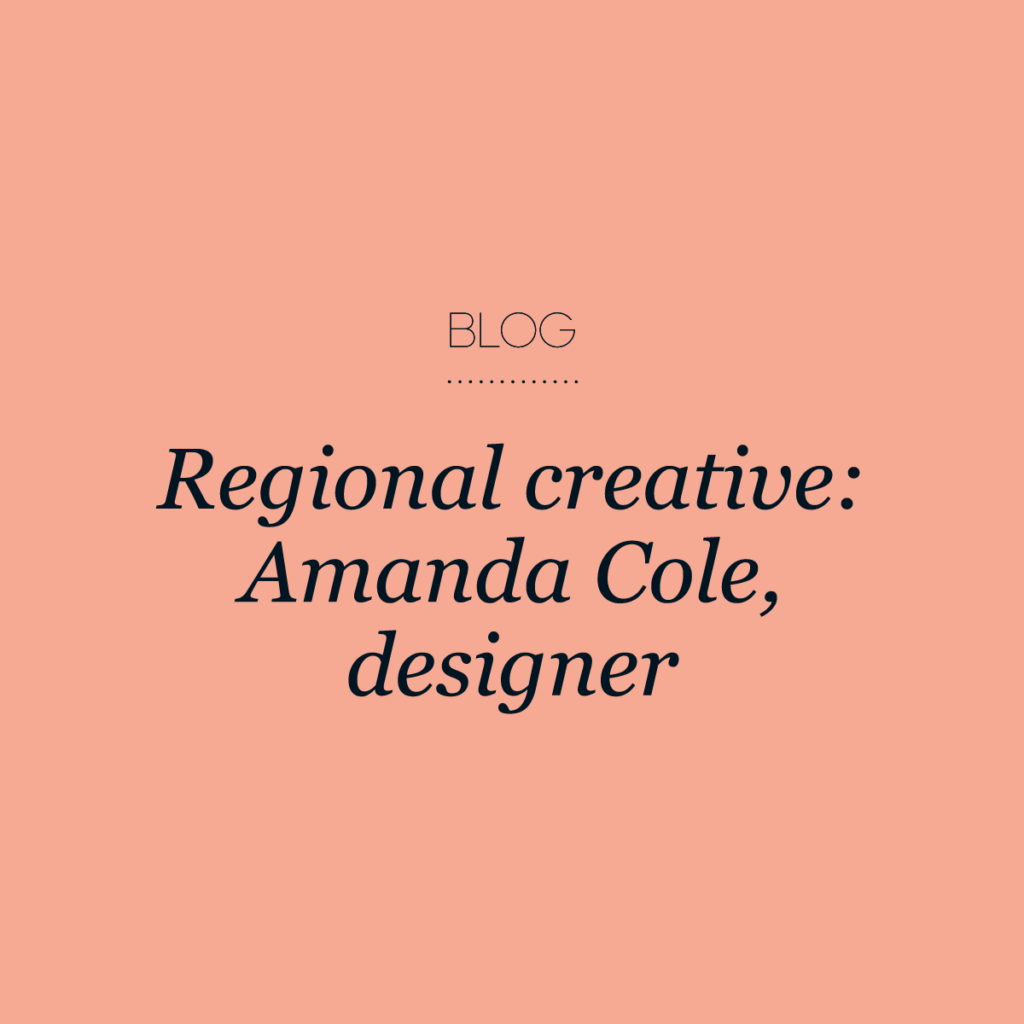
By Mirella Marie
Amanda Cole is a graphic designer from Newcastle, Australia. Alongside her husband Scott, she runs Shorthand, a creative studio that specialises in branding. I wanted to get Amanda’s insights into running a business in a regional area after moving from a capital city, and her thoughts on starting up a design studio.
After living and working in Melbourne for many years, how have you found the transition to Newcastle, both personally and professionally?
The transition to Newcastle was actually a move home. I completed my degree in Newcastle, living here before heading to Melbourne. Personally it wasn’t too stressful as I was returning to old networks and my husband and business partner Scott has been there every step of the way (including that dreaded 10 1/2 hr drive!) Professionally it was a bit daunting at first. There isn’t the sheer volume of potential clients in Newcastle like there is in Melbourne. Getting your name out there is tricky, as businesses in smaller places put a lot of weight on word of mouth referrals. You need to be patient as it takes time to build up your reputation. We were lucky in that previous Melbourne clients were nothing but supportive of the move and many have stuck with us even now, two years down the track.
How would you describe your work?
We are first and foremost a branding studio and that is at the core of everything we do. Generally our projects begin with a client requiring a new brand, or a rebrand in the case where a business is evolving. We like to work closely with our clients, spending time getting to know their business first before jumping into creative. Once an identity is finalised we roll-out to any number of touchpoints, be it business cards, stationery, web or environmental design. Visually we are big believers in less is more and find that a minimal approach allows for the clearest communication.
Who is your typical client?
Our studio doesn’t have a typical client and we tend to attract from a variety of sectors, which I have always enjoyed. In saying this, quite often their problems are similar e.g. businesses evolving internally with new technology having a bigger influence on processes. In recent years the studio has attracted a lot of not-for-profit organisations which has been really rewarding.
Which part of the creative process do you enjoy the most?
Presenting the concept to the client is always stressful – but when they love the work and have a big smile it always makes my day. We have an initial collaborative approach with clients and like to involve them in the strategic process. I find working this way really beneficial, as relationship-wise we form a team. This also means when we unveil the concept, the client already has a general idea of what the identity is going to look like so there is no ‘presentation shock’. By getting clients more involved, they take more ownership over the brand as truly theirs which is great!
What advice would you give to someone starting a design studio?
While some manage to pull it off, I would advise against attempting to start a studio straight off the back of study or abruptly leaving a full-time position. The way I got to where I am now was in small transitional steps. I began freelancing after hours until I could no longer manage both it and my day job. After this I began a part-time position and eventually moved on to doing my own thing full-time. Even then I still occasionally took contract jobs or a bit of freelance before I was in a really secure place to start the studio. This was great for me as it’s low stress, low risk, and gives you opportunities to keep earning some steady cash whilst setting yourself up and gaining regular clients.
Once you’re set up, keep your overheads low by setting up a home office – although if you don’t trust yourself to get things done at home, co-working spaces are a great alternative.
Plan ahead. You need to be constantly thinking about the future and looking for new clients to keep the work flowing. Aim to transition your regular clients to retainers to give your business stability. Make sure your website and social media are regularly updated – leaving these jobs until the work starts to dry up will only give you a headache.
Lastly, don’t neglect the admin. Xero is great if you’re looking for some easy to use accounting software and helps you keep an eye on those monthly budgets. Also, figure out what those budgets are! There are lots of easy to find calculators out there to help determine how much and how many hours you need to be charging. If you prefer the printed word, the Graphic Artists Guild Handbook: Pricing & Ethical Guidelines is a great resource.
What is the creative community like in Newcastle?
Really blossoming which is fantastic! There a lot of talented people here doing amazing things. Newcastle has one of the highest retention rates of any place in Australia. This is of great benefit to the area because while people often leave to experience other (bigger) cities, they then bring that experience back home with them when they return.
What does a typical day involve for you?
I jump on my phone with my morning coffee to check any overnight emails, social media and read the news before heading to the office by nine. As Scott and I have evolved our roles within the business, I now spend the first full half of the day on meetings, scheduling, accounts, proposals and emails. After lunch is when I’ll aim to get into any creative work – this can be helping the guys with any overflow or actioning our latest brand roll-out.
Each day ends consistently at five. After working in bigger agencies where it seemed competitive as to who could stay the latest, I'm very aware of leaving on time. Occasionally if there are deadlines looming we will work after hours, but I like to avoid that as much as possible.
I enjoy cooking so most nights revolve around making dinner. Being winter, it gets dark earlier so nights are spent in hibernation, but in summer it’s hard to resist a walk along the beach to the Anzac Memorial Walk (if you’re ever visiting Newcastle I recommend it!).
What are your plans for the future?
Currently the biggest priority is moving into a new studio space by the end of the year. When we established the studio in Newcastle, we started in a smaller space while we got ourselves settled but have quickly outgrown it. Currently we have three team members, with the studio networking with quite a few external creatives on a project-by-project basis. We intend to keep this model moving forward as it allows for the greatest flexibility on projects and personally it makes for my ideal studio balance.
To view Amanda’s work visit http://shorthandstudio.com. Follow her on Instagram, Twitter and Facebook.
Mirella Marie is the owner and creative director of Vertigo, a Melbourne based graphic design studio specialising in brand identity and design. She is also a contributor for Women of Graphic Design, a project examining the work of female designers around the world. Join her on Instagram @studiovertigo.
Tools of the Trade: Carli Hyland & The Grim Press
By Brianna Read Who better to discuss tools than a woman who grew up on a farm! Carli Hyland of The Grim Press was kind enough to allow me to quiz her about the tools of the print trade. The Grim Press, so named because of its beginnings in a disused funeral parlour, was created by Carli and unites her many talents into one creative practice.
The aspect of Carli’s practice which first piqued my interest for this column was the fact that she uses both high and low tech tools to create. When pressed to narrow down her ‘can’t do without’ tool she replies “computer and pencil”. I am sure most creative folk are now nodding in agreement; most of us cannot do without either of these rather brilliant tools. One look at the beautifully crafted pencils made by Carli and the reverence is obvious, the humble pencil is given a whole new meaning when viewed through the lens of The Grim Press.
The toolkit of The Grim Press certainly does not end there. I enquire after a foil lined box housing an ultra violet globe on a long power cord and discover that Carli is quite at home in a hardware store. This contraption (another great word for a tool) was crafted entirely by Carli as a makeshift exposure unit for the print plates she hand makes. This is where the process really starts to sing… Carli sketches using a pencil, refines a design using the computer, prints the design, exposes the design to plate then prints the inked design onto paper using a small hand wound press. There is a wonderful blend of the old and new, the latest, greatest and the makeshift at The Grim Press!
I mentioned that Carli grew up on a farm and she credits this upbringing as the source of what she calls her ‘How can we make this work with what we’ve got?’ approach. The can-do nature of folks who have had to make do is a common thread in stories about the origin of a tool. I must point out that this aspect of Carli’s creative practice is not the first thing you would assume when viewing her work – the ideas of do-it-yourself and makeshift often bring to mind phrases like ‘not quite right’ and ‘rough around the edges’ – and while evidence of the handmade is present, all her designs, prints and publications are immaculate, high quality professional pieces. When I mention this nature of her work a discussion on the merits of mastery ensues…but that is fuel for another column I think!
With a background in visual arts, photography, book making, illustration and graphic design The Grim Press is a rare design practice offering clients a diverse range of design and print services. Carli’s clients can have custom made gift cards, logo design, hand bound books and publications and since the recent acquisition of a new printer using archival quality inks The Grim Press is also offering a high quality art printing service too. This is the made to measure of graphic design and printing!
Adding another string to her already full bow Carli is preparing to run workshops teaching willing students how to design and create their very own hand printed stationery and hand bound journals.
Carli's printmaking and bookbinding workshops begin in October at The Gasworks in Albert Park, Melbourne.
Carli Hyland and The Grim Press can be contacted by email at info@thegrimpress.com or through her website contact form here.
Brianna Read is a designer/maker based in Melbourne. Her knitwear label Jack of Diamonds Knits employs traditional hand-made techniques in combination with machine knit technologies. Brianna’s multi-faceted creative practice encompasses design, production, works for exhibition and machine knitting workshops.








